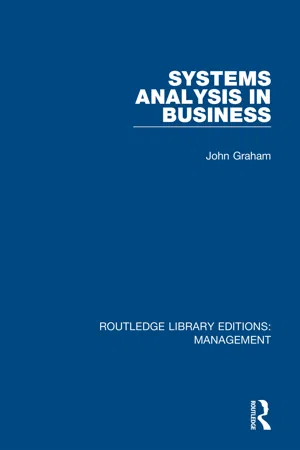Magnetic Storage
Magnetic storage refers to the technology of storing data using magnetized materials, such as hard disk drives and magnetic tapes. In this method, data is encoded as magnetic patterns on the storage medium, allowing for non-volatile and relatively high-capacity storage. Magnetic storage has been a fundamental component of computer systems for decades, providing a cost-effective and reliable means of data storage.
4 Key excerpts on "Magnetic Storage"
- eBook - ePub
- John Watkinson(Author)
- 2013(Publication Date)
- Routledge(Publisher)
...10 Magnetic disk drives Disk drives came into being as random-access file-storage devices for digital computers. They were prominent in early experiments with digital audio, but their cost at that time was too great in comparison to emerging tape technology. However, the explosion in personal computers has fuelled demand for low-cost high-density magnetic disk drives and the rapid access offered is increasingly finding applications in digital audio. Optical and magneto-optic (MO) disks are considered in Chapter 12. 10.1 Types of disk drive Once the operating speed of computers began to take strides forward, it became evident that a single processor could be made to jump between several different programs so fast that they all appeared to be executing simultaneously, a process known as multiprogramming. Computer memory is designed for speed and remains more expensive than other types of mass storage, and so it has never been practicable to store every program or data file necessary within the computer memory. In practice some kind of storage medium is necessary where only programs which are running or are about to run are in the memory, and the remainder are stored on the medium. Punched cards, paper tape and magnetic tape are all computer media, but suffer from the same disadvantage of slow access. The disk drive was developed specifically to offer rapid random access to stored data. Figure 10.1 shows that, in a magnetic disk drive, the data are recorded on a circular track. In floppy disks, the magnetic medium is flexible, and the head touches it. This restricts the rotational speed. In hard-disk drives, the disk rotates at several thousand rev/min so that the head-to-disk speed is of the order of one hundred miles per hour. At this speed no contact can be tolerated, and the head flies on a boundary layer of air turning with the disk at a height measured in microinches. The longest time it is necessary to wait to access a given data block is a few milliseconds...
- eBook - ePub
- John Graham(Author)
- 2018(Publication Date)
- Routledge(Publisher)
...Chapter 6 Designing File Systems— Magnetic Tape Basic Method of Handling Magnetic Tape Files A Serial Medium Magnetic tape is one of the principal backing storage media used in computer systems - that is to say, it is used to hold files of information in an organized fashion so that programs can retrieve data as required. These files are similar in concept to the reels of magnetic tape used in a conventional tape recorder, i.e. when information is required from a particular file, the operator has to load the reel concerned and a search is made through the tape from beginning to end to retrieve the information needed. A particular organization will probably require many data files, and it is not economically feasible at present to build computers with large enough internal storage capacity to retain all the file information needed; thus backing storage media such as magnetic tape are necessary. Magnetic tape is classified as a serial storage medium, since records can be retrieved only by reading through the file from beginning to end; each record has to be examined to see whether it displays the characteristics sought. Extracting information from a file is known as reading; records extracted in this way can be placed into the computer’s main memory for processing. To insert new information into a record on a magnetic tape file, it is necessary to read records from the file and to update them by changing the values of individual fields and perhaps by extending the length of records. If some records have been increased in length it is clearly difficult to write them back on to the same position on the reel of tape without overwriting information relating to adjacent records on the file. This aspect governs the whole approach to file processing using magnetic tape. The updating of a magnetic tape file entails reading records from the file and examining them one by one in main memory...
- eBook - ePub
- David Austerberry(Author)
- 2012(Publication Date)
- Routledge(Publisher)
...15 Mass Storage Introduction Magnetic disks are not the only way to store digital media assets. There are many reasons why disks may not be appropriate. First, there may be far too many assets to store on disk arrays. This is highly likely if you are managing video assets. Second, it is astute to keep offline backups of the assets, for security against system failure or to cope with disasters like fire, earthquake, or theft. The third reason is that a permanent archive may be required for business reasons or because legislation requires it. Many industries are obliged to keep permanent records of all files. Although the price of disk storage is always falling, there are limits to the size of a disk array. The main alternatives for backup and archives are magnetic tape and optical disks. These can be kept near online in robotic libraries or stored offline on shelves in conventional libraries or vaults. Data Tape Tape is the traditional data storage medium. Until the development of magnetic disks, tape was the primary storage, but now it has become the main choice for secondary storage: for backup and archiving. Just like the hard drive, IBM pioneered much of the development, but now many vendors are actively marketing tape solutions. Several families of tape drive have emerged. AIT, DLT, and LTO are three of the leading formats. There are several others formats, but they are more suited to small system backup and have neither the performance nor the capacity for the demands of a digital asset management system. Examples of these would be digital audio tape (DAT) and the quarter-inch data cartridge (QIC). Streaming and Start–stop Data can be written to the tape block by block, in a process called start–stop recording. Where large volumes of data have to be written to tape, the alternative is to write data continuously to the tape, not pausing at the inter-record gaps...
- eBook - ePub
Moving Media Storage Technologies
Applications & Workflows for Video and Media Server Platforms
- Karl Paulsen(Author)
- 2012(Publication Date)
- Routledge(Publisher)
...5 BUSES, PORTS, AND INTERFACES Storage and memory, when referring to computer data storage, are those components, devices, and the recording media that perform storage and memory functions and allow for the retention of digital data for a period or duration. Storage of the data, as one of the core functions of the modern computing system, may be thought of as “information retention.” Memory is often referred to as a form of semiconductor-based storage. Semiconductor memory is usually fast, but may often only be utilized as temporary storage. This form of memory is known principally as random-access memory (RAM). Mass storage is the nomenclature generally associated to more permanent forms of memory, such as optical discs, forms of Magnetic Storage like hard disk drives, and other types, which would be slower than RAM or flash memory. Mass storage also refers to huge amounts of data often stored in centralized libraries that are accessible by the masses. History will reveal that memory and storage were originally defined by the terms “main memory” and “secondary storage,” respectively. Further discussion will find that those terms also make reference to “internal memory” and “external memory,” which in turn led to the evolution of network-based storage, that is, NAS and SANs...



